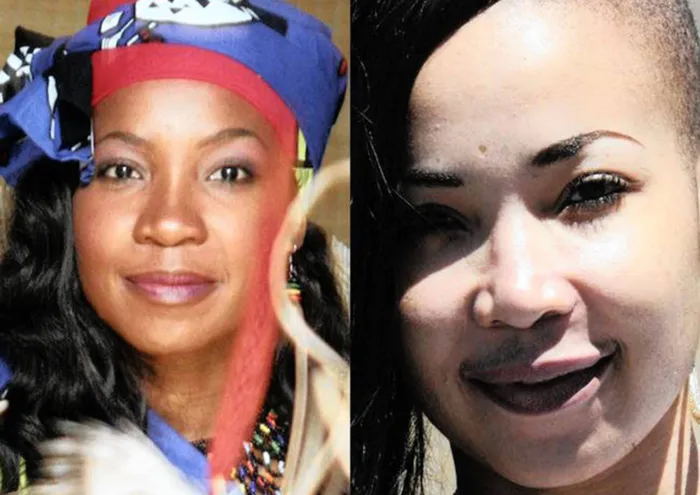
BEFORE AND AFTER: Kwaito star Nomasonto Mnisi, called Mshoza, shocked fans when she appeared to have bleached her skin. BEFORE AND AFTER: Kwaito star Nomasonto Mnisi, called Mshoza, shocked fans when she appeared to have bleached her skin.
More than one in every three SA women use skin lightening products, despite the associated dangers which include certain cancers, kidney damage and irreversible skin pigmentation problems.
UCT researcher Dr Lester Davids detailed the damage from these popular creams, during a Physiology Society of Southern Africa conference in Stellenbosch this week.
These included blood cancers such as leukemia, cancers of the liver and kidneys, as well as a skin condition called exogenous ochronosis, a form of hyper pigmentation which causes the skin to turn a blue/purple shade.
If identified early, the skin condition could be treated, using lasers or a process to remove the top layer of skin, called dermabrasion.
“However, if it’s discovered later, it can only be treated through skin grafting,” Davids said.
The culprit is hydroquinone, which prevents the skin from producing pigment or melatonin. It was banned in a number of European countries as early as 1976 because of its carcinogenic properties. The US Food and Drug Administration banned its use in over-the-counter preparations 30 years later, in 2006.
In SA, hydroquinones with a concentration above two percent were banned in the 1980s. But while they may be illegal here, that doesn’t mean they’re unavailable.
A search on local websites Gumtree and Bid Or Buy showed a number of advertisements for skin lightening creams.
Most of the results found did not contain the substance, however one advertiser wrote that it contained “the maximum amount of hydroquinone allowed”, while another claimed to contain it, but didn’t provide measurements.
Many overseas websites will ship the creams internationally.
Reports also indicate that the creams are widely available at markets, and through informal traders in places like taxi ranks and train stations.
Other ingredients commonly used in whitening preparations included arbutin, which is extracted from the bearberry, kojic acid derived from a fungus, aloesin and liquorice extract.
Increasingly, skin stripping or desquamation and anti-oxidant therapy were also being used to remove melanin and lighten the skin, he added.
Two local celebrities have also raised the skin lightening debate in recent months. Former Scandal actress Sorisha Naidoo appeared several skin shades lighter, after using a product called Pure Perfect, which she markets. The company’s website says the range does not contain any hydroquinones, but does contain arbutin and kojic acid.
Kwaito star Nomasonto Mnisi, who goes by the name of Mshoza, also shocked fans when she appeared to have bleached her skin almost white.
She told the Saturday Star in an interview last year: “I don’t really look pale at the moment. But yes, when everything is said and done I will look like a white person. From head to toe.”
Davids cited a study which looked at the number of reported cases of exogenous ochronosis in various areas between 1966 and 2007. Of these, by far the highest number, 756, were reported in Africa. Only 22 were reported in the US, eight in Europe and one in India. Of the 756 in Africa, 82.4 percent were reported in SA.
A World Health Organisation Report released in June, which warned of the dangers of mercury contained in many skin whitening products, indicates that 35 percent of SA women use some sort of skin whitening preparation. Mercury can cause many ailments. -Saturday Star
